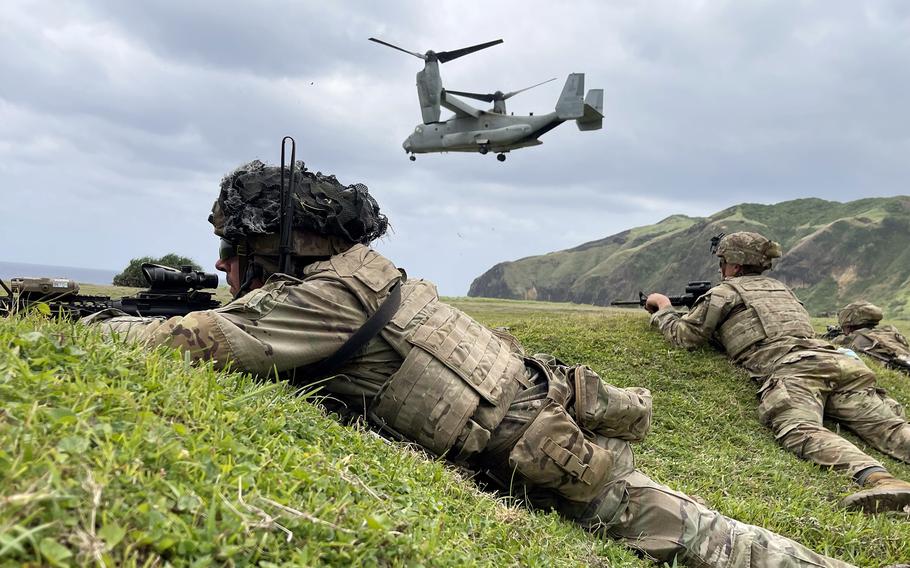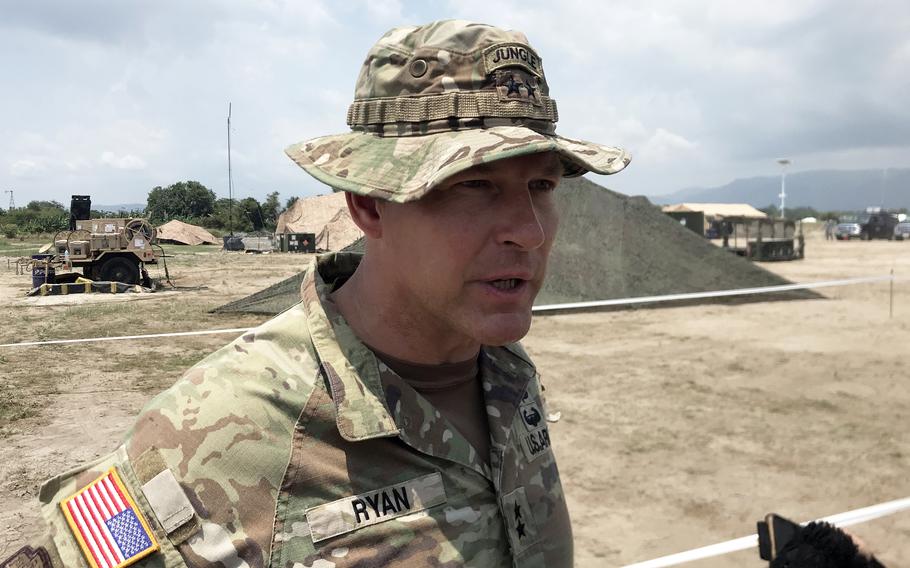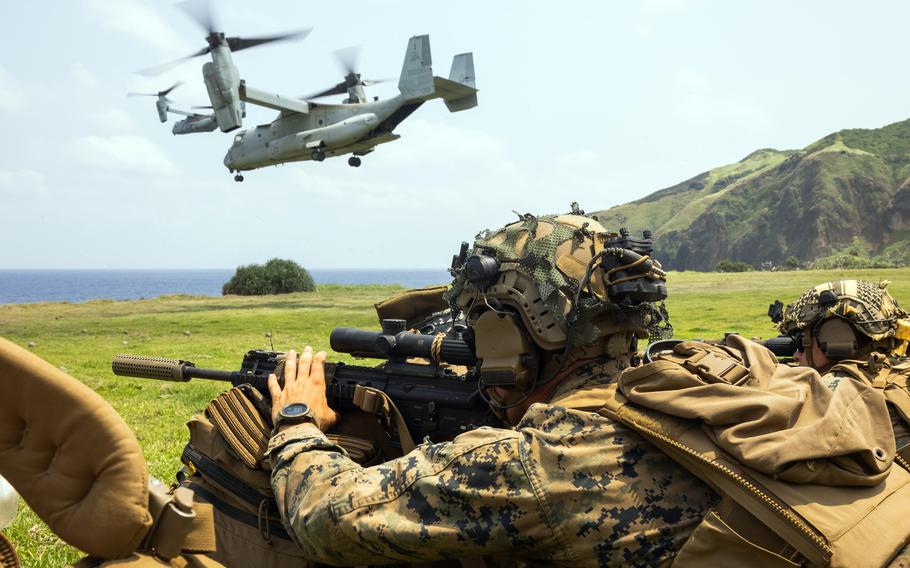
U.S. soldiers support air assault training on Batan Island, south of Taiwan, during the Balikatan exercise in the Philippines, April 23, 2023. (Jeff Tolbert/U.S. Army)
SAN ANTONIO, Philippines — U.S. soldiers and Marines and Filipino troops demonstrated an air assault on three islands guarding a key strait near Taiwan, sending a message to China that America is ready to defend its ally’s sea territory, according to the force’s commander.
Hawaii-based troops dropped onto the islands of Fuga, Calayan and Batan, north of the Philippines’ main island of Luzon, between April 21 and Monday, U.S. Army spokesman Maj. Jeff Tolbert told Stars and Stripes on Wednesday. They are assigned to Company A, 1st Battalion, 27th Infantry Regiment, 25th Infantry Division and the 3rd Marine Littoral Regiment.
The air assault drills, which included Filipino troops, were part of the allies’ annual Balikatan exercise that concludes on Friday. Described by the U.S. military as the largest-ever version of the exercise, this year’s drills involve 17,000 troops from both countries.
America is prepared to help the Philippines defend its sea territory, Maj. Gen. Joseph Ryan, commander of 25th ID, which took part in the air assault on Batan, said Wednesday.
“I think these island air assaults were great demonstration of that,” he said.
Troops staged for the air assaults at Fort Magsaysay, north of Manila, Tolbert said. The fort is one of nine military installations where American forces may operate under the 2014 Enhanced Defense Cooperation Agreement.
A force of 200 U.S. and Filipino troops flew to the USS Miguel Keith, an expeditionary mobile base, off Luzon and boarded MV-22 Osprey aircraft of Marine Medium Tiltrotor Squadron 268, also based in Hawaii, for the drills, Tolbert said.

U.S. Army Maj. Gen. Joseph Ryan, commander of the Hawaii-based 25th Infantry Division, speaks to reporters about the Balikatan exercise in San Antonio, Philippines, Wednesday, April 26, 2023. (Seth Robson/Stars and Stripes)
A High Mobility Artillery Rocket System, or HIMARS, landed at Calayan in an Army landing craft and went through mission procedures without firing, he said. At Batan, the weapon was brought into port but not offloaded.
The force flew back to the Miguel Keith on CH-47 Chinook helicopters, Ryan said.
U.S. forces responding to a contingency in Taiwan could stage on islands north of Luzon, the Wall Street Journal reported from Batan on Monday.
The islands where the Balikatan air assault demonstration took place are just south of the 70-mile-wide Bashi Channel between the Philippines and Taiwan.
The channel is a route for China’s navy to the east coast of Taiwan and the Pacific.
The Chinese aircraft carrier Shandong passed through the channel earlier this month before carrying out fighter training east of Taiwan.

Members of the Hawaii-based 3rd Marine Littoral Regiment secure a landing zone during Balikatan training on Batan Isand in the Philippines, April 23, 2023. (Patrick King/U.S. Marine Corps)
The channel is a potential transit point for U.S. forces headed to the Taiwan Strait from Guam. It’s also a commercial shipping and undersea communication cable route.
“The Army’s campaign in the Pacific is designed to deter … because we don’t want a war with [China],” Ryan said.
Training such as the island air assaults has a deterrent effect, he said.
“Message sent is we are ready, we are capable and we are prepared; we have got a great partnership and we mean business,” he said.
America’s National Defense Strategy identifies China as the pacing challenge.
The Philippine army has been increasingly concerned in the past six months with aggressive Chinese tactics at sea, Ryan said.
“Are the exercises designed with [China] in mind? Not from a theoretical standpoint,” he said. “In a strategic sense, the messaging part? Sure.”